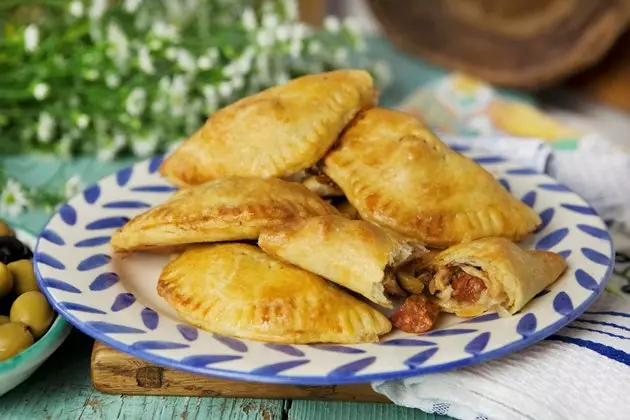
Long before food trucks, it already existed!
BEFORE TACOS AND PIZZAS
Without going further. corn tortillas With which they are made, for example, Mexican tacos have existed in parts of Spain for centuries, but they have another name: stems , a dish that was traditionally prepared in Basque farmhouses and that today is still cooked in an artisan way. They are eaten the same as a taco, but what changes is the filling: txistorra, black pudding, chorizo, bacon, loin..., it should be noted that it is of Basque origin.
And before the pizzas al taglio or in slices arrived, in Valencia the 'cocas' already existed , which visually are very similar to pizza: a base of baked dough, with toppings of different flavors, such as tomato, onion, anchovies, oven-roasted vegetables..., although yes, the most traditional coca and the one that makes my servant he smacks every time he visits Levante, It is the tomato sauce, tuna, boiled egg and pine nuts . In this case, the usual thing is that it is covered, in the style of the Galician empanadas and dumplings which, by the way, are the most street snack of Galicia from the time of the Goths. Cod with raisins, octopus, scallops, lacón with mushrooms, tuna belly… and hundreds of more combinations. Along these same lines, in Salamanca they have their hornazo , another type of bread dough that is also filled, but in this case with all kinds of cured meats, which is what is most abundant in Salamanca: chorizo, loin, ham…
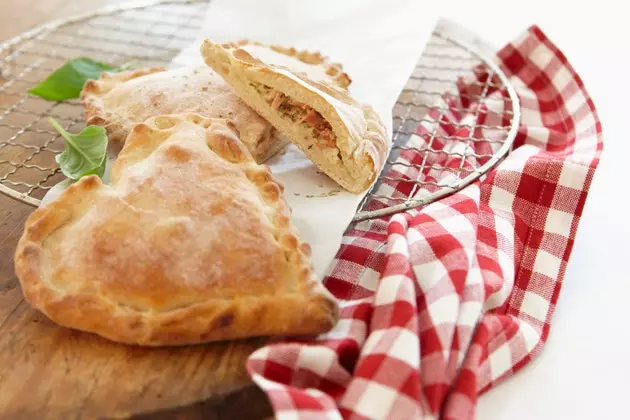
Galician dumplings
INTERPANES
If we talk about street food impossible not to talk about sandwich . In Madrid, the squid ones are famous, especially those from the Main Square for being the ones that are most often eaten fresh - by choice, or, as often happens, forced because there is no place to sit inside the premises , generally of reduced dimensions. A tradition, **that of the sandwich**, that extends throughout the peninsula, although with different fillings. In Valencia they have the unmistakable black and white , a sandwich of bread with black blood sausage with onion and longaniza (white butcher's sausage), fried or grilled; for that of not staying hungry, sometimes it is completed with baby broad beans or with a garlic and oil sauce , and better not to say no to this dressing because the result is the best.
In this same Community, in the province of Castellón, they have the Ximo. It is also known as the valencian pepito , which has nothing to do with the veal nugget that is made in Madrid, and be careful because the thing has crumbs: It is a soft bread muffin, stuffed with ratatouille with tomato, tuna, boiled egg and pine nuts. , which is then coated in batter and fried -as is-; a very typical caloric bomb of Holy Week and Fallas. In the north there are also native sandwiches, as in Asturias with its preñao bun , a bread muffin that, when baked, has Asturian chorizo inside -if it is cooked beforehand in cider, better than better- or bacon; any meeting or espicha is a good excuse to eat r bollus.
And in the sweet section, only one mention, but very general: the emblematic bread with chocolate from our childhood, that daily snack that a brand popularized in an industrial pastry version -but which had nothing to do with the original-, consisting solely of a piece of bread with a portion of chocolate. An ole to that mother who… invented it!
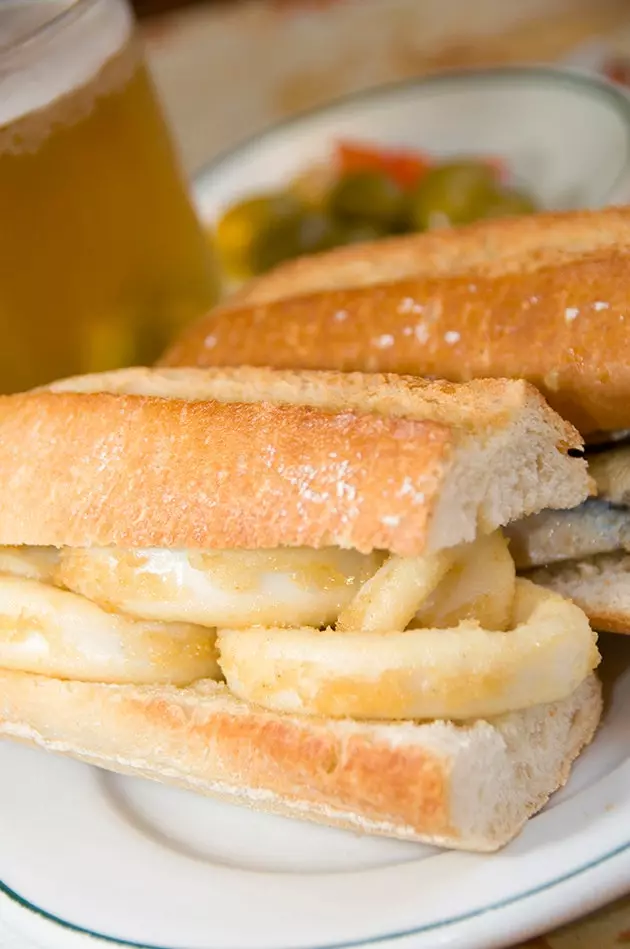
Squid sandwich: pure "Madriz"
IN CUCURUCHO
going south, gastronomy smells like fish . It is usual to find it in the form of I respect to the Malaga style , especially sardines nailed to hot coals in the open air to bask in the sun; or in the form of fried fish, with its traditional squid, red mullet, anchovies, pijotas... And although the really comfortable thing is to take it with a hand resting on the bar counter and in the other a copy of fino, it is more than usual to see frying stalls that serve cones to drink in streets and squares, and especially by the sea.
But it is not a custom only in the south, without going any further it can also be seen in the port of San Sebastian . At one end of the promenade you can buy cones of caraqueñas (sea snails), periwinkles or shrimps to take during a walk around the port almost at any time of the day. In the purest street food style, and it has been that way for years, especially in summer.

The espeto: a great classic, Phoenician?
BEST FRESHLY MADE
More than winter are the roasted chestnuts , to eat them in the street as if they were pipes, although in ultra hot version fresh from the coals , ideal to keep your hands warm. What should not be drunk so hot - at least not without caution - are the torreznos or 'torrenos' from Soria . Marinated and fried bacon sticks, which are made following a meticulous frying process -in case anyone wants to do it at home, let them know that the correct temperature of the oil and the position in which they are fried are everything-. They are sold in stalls as if they were churros. Just like the donuts in Castellón , although in this case it is more practical to eat and transport, since they are handmade bread sticks, baked and with a touch of oil and salt; I take this opportunity to confess that the version with paprika is addicting.
VERBENEROS
The patron saint festivities and popular festivals are the best time to dust off traditional recipes that, in many cases, are tasted in street stalls. The festivals of Spain smell of bacon, chorizo and black pudding sandwiches ; in places like Madrid the smell is even more intense if it comes from fried chicken or ins and outs , a delight for the most casqueros (if you prefer to taste them sitting down, Freiduría de Gallinejas ). The Moorish skewers They are another of the verbenera delicatessens, along with the portions of fried potatoes well impregnated in sauces of those that come from industrial-size boats, and that for many years have usually been served in 'mini' glasses.
The parties also have vinegar flavor of the most characteristic pickles, from the eggplant banderillas that we ate in the street as if it were a lollipop -whose idea would it be...-. And salted: mojama, tuna, herring, chaplains... although this is rather typical of coastal areas, such as Murcia . The ** paparajotes ** are also from there, a battered and fried lemon leaf that has become a gastronomic symbol of the region and that comes to the fore during the spring festivities.
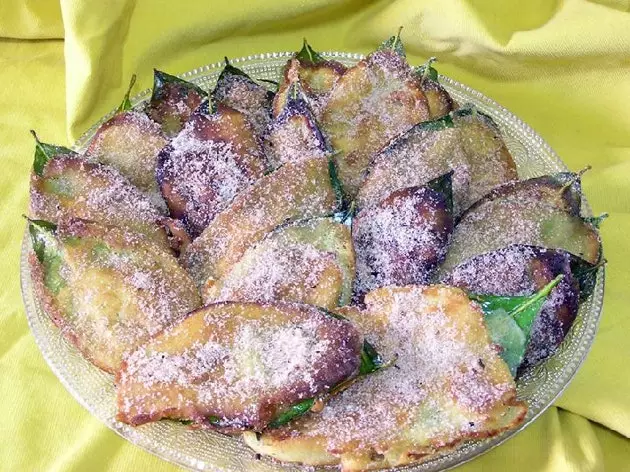
paparajote with sugar
ENROLLED
Many will remember the way in which they used to serve churros in street kiosks: in a string hanging from a reed . It was the best way to carry the churros down the street, without leaving or burning yourself. And although that tradition has been lost -something that is appreciated, for that of preserving nature-, what do not disappear are the churros or the Itinerant churrerías planted in the middle of the street during the winter season. Inevitable at this time to remember a food truck of those that we see monthly in concentrations foodies on wheels, like MadrEat, or not? And if we talk about churro, we must not forget the weaving , the churro with DO Malaga.
Follow @\_noeliasantos
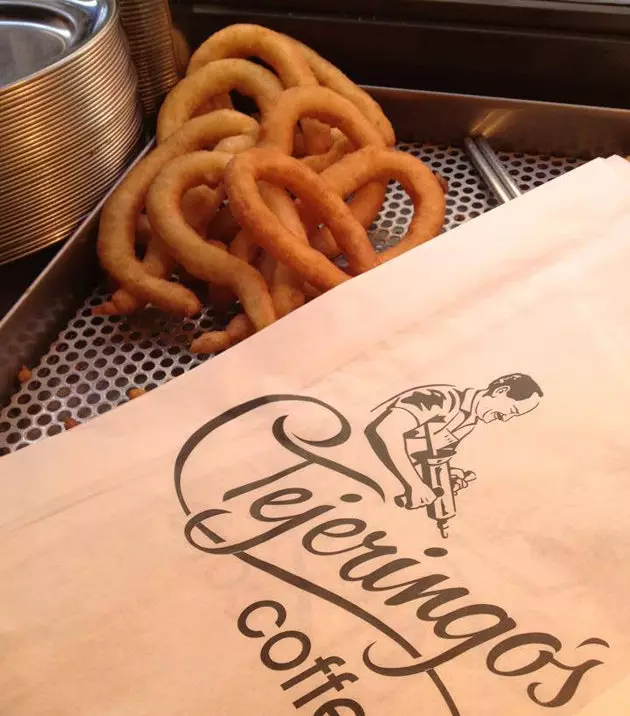
They are not churros and they are from Malaga
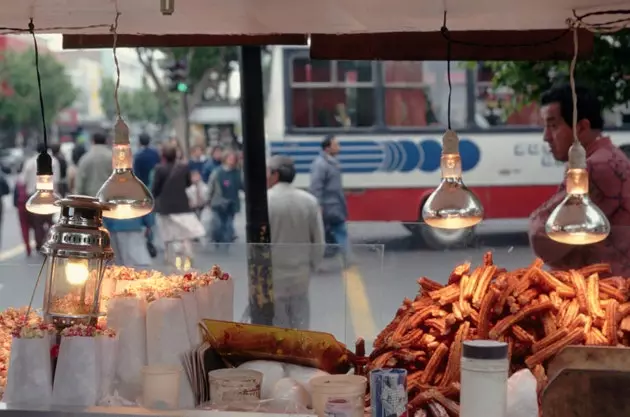
Churreros of the world: saviors
*** You may also be interested in...**
- The typical Spanish breakfast: tell me what you eat for breakfast and I'll tell you where you're from
- In defense of the sandwich
- The origin of the Madrid squid sandwich
- 16 places in Madrid where you can eat a squid sandwich
- Eight ways to eat octopus in Galicia
- Five things to eat in Galicia (and they are not seafood)
- The other gastronomy of Galicia
- The best pizzas in Madrid
- The best burgers and sandwiches in Barcelona
- Ten places to dip the churro in Barcelona
- Chocolate route through Madrid
- This is how they dip the churro outside of Spain
